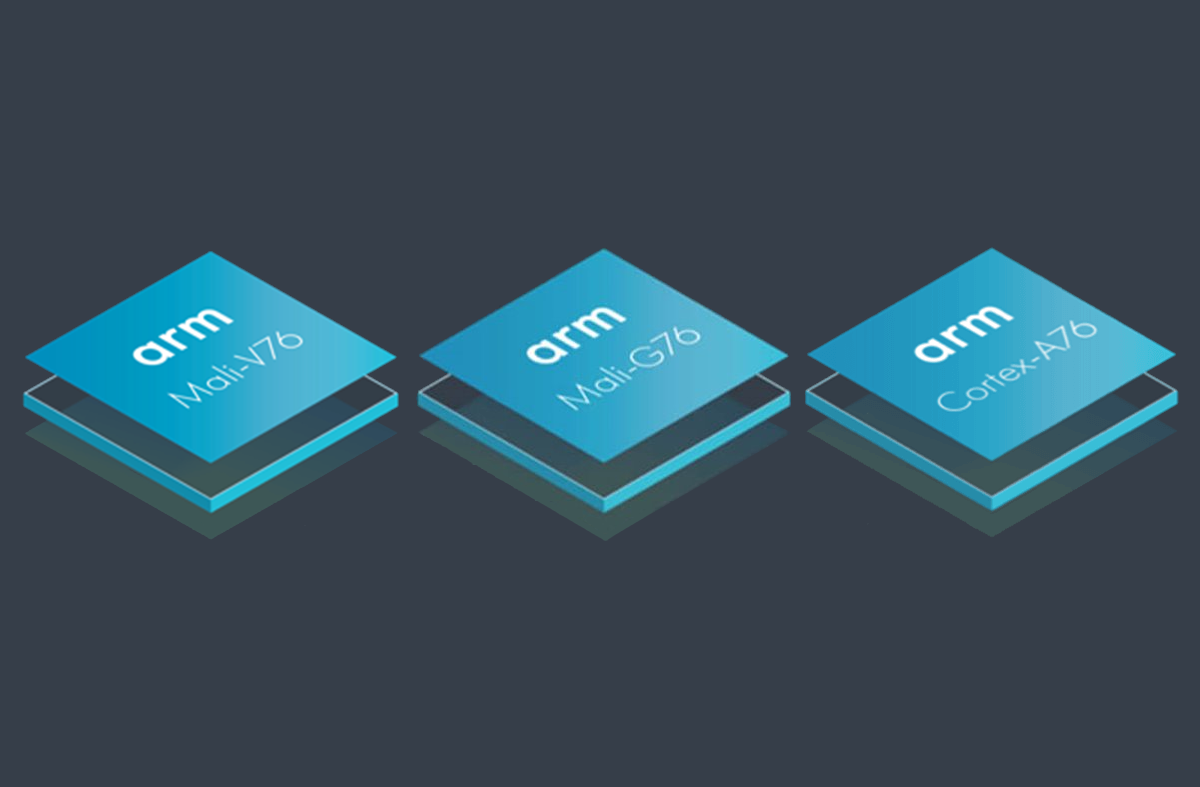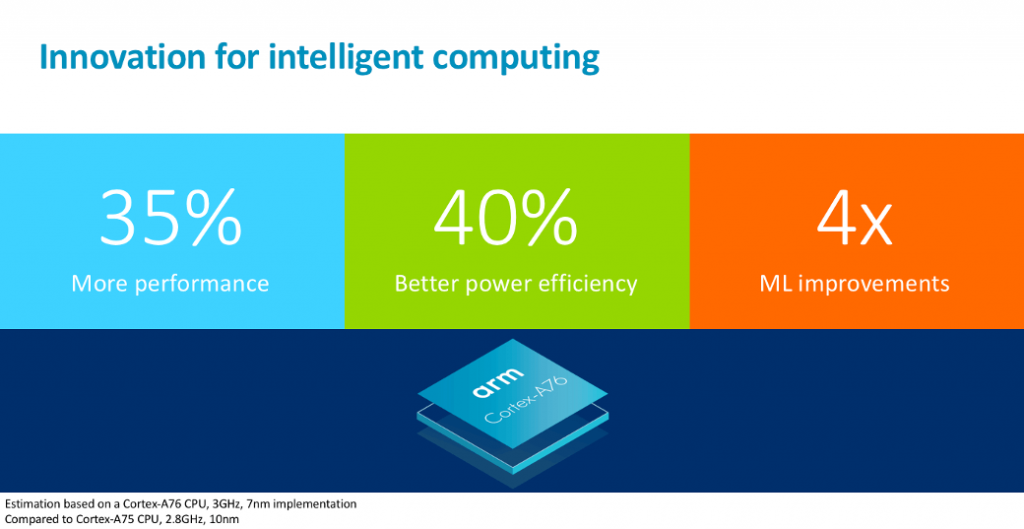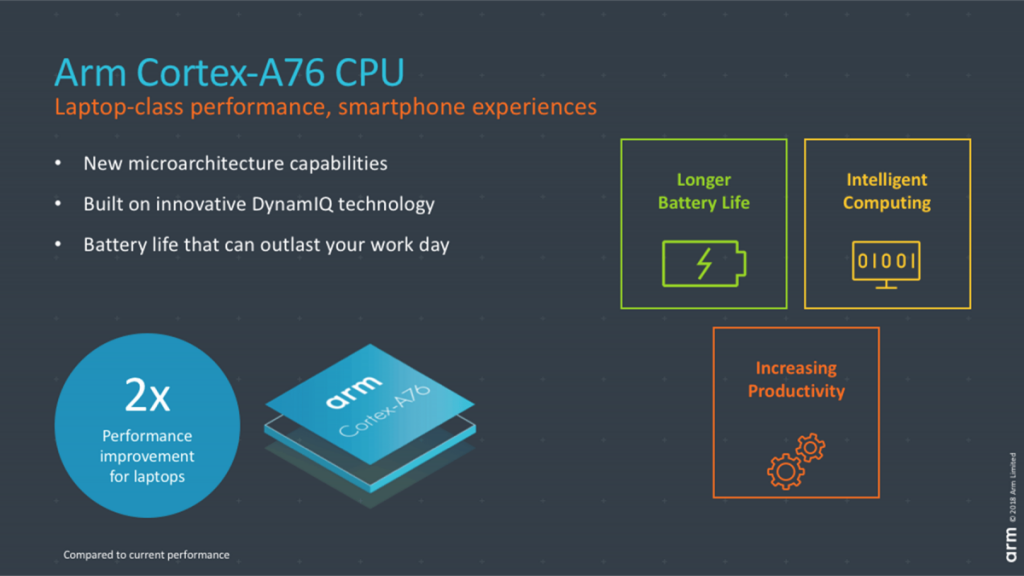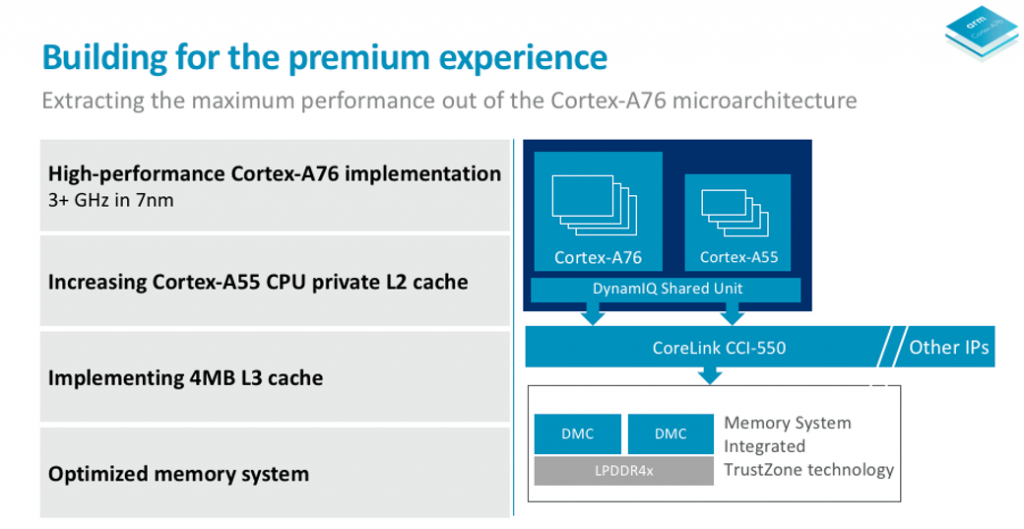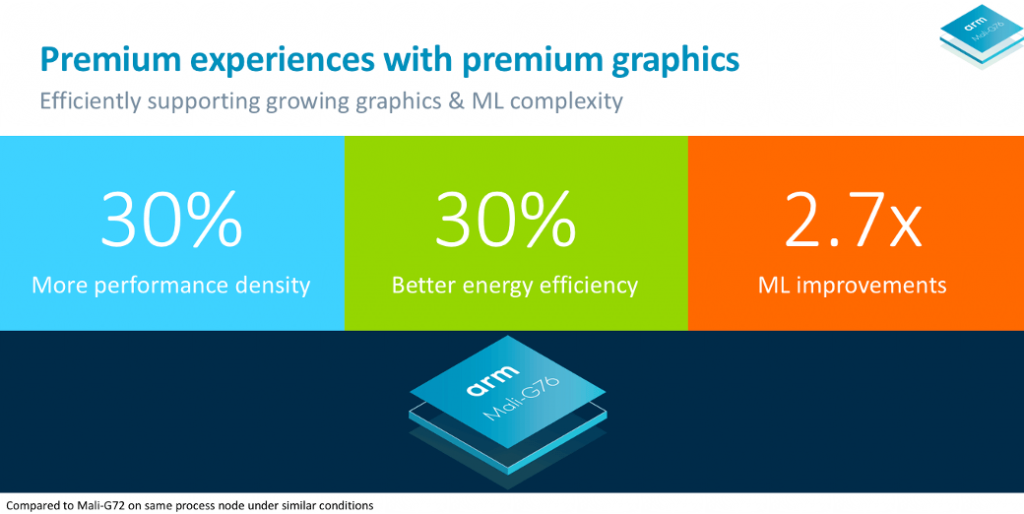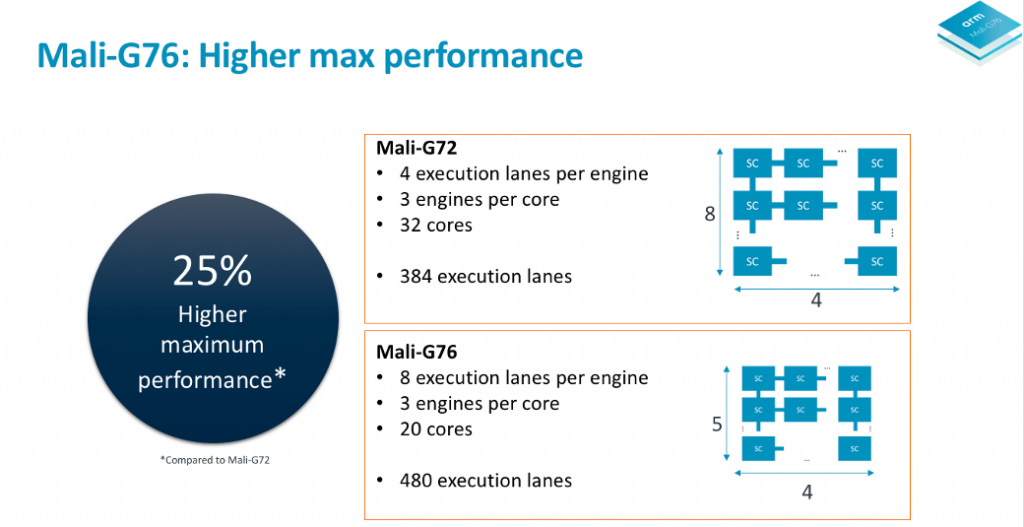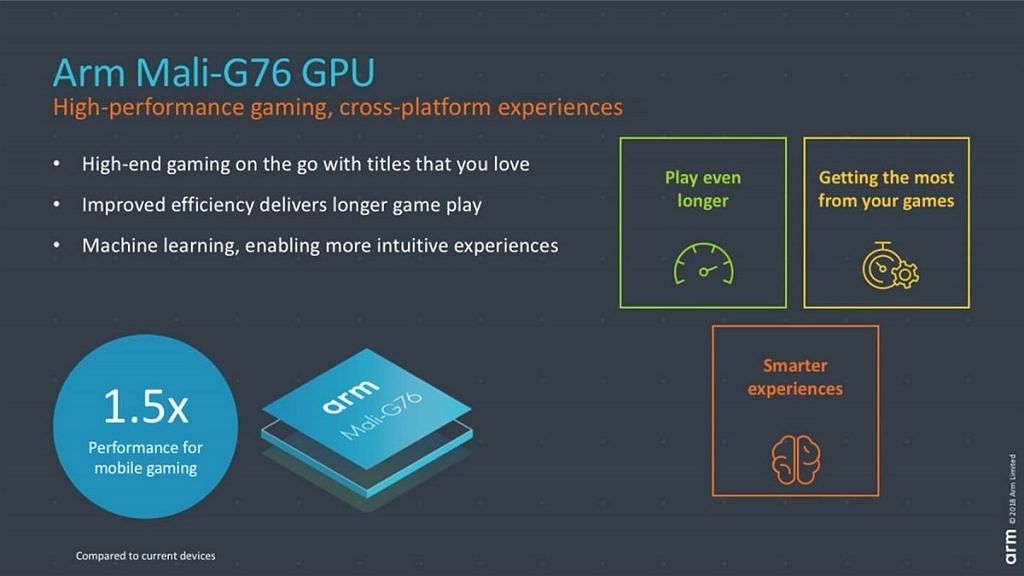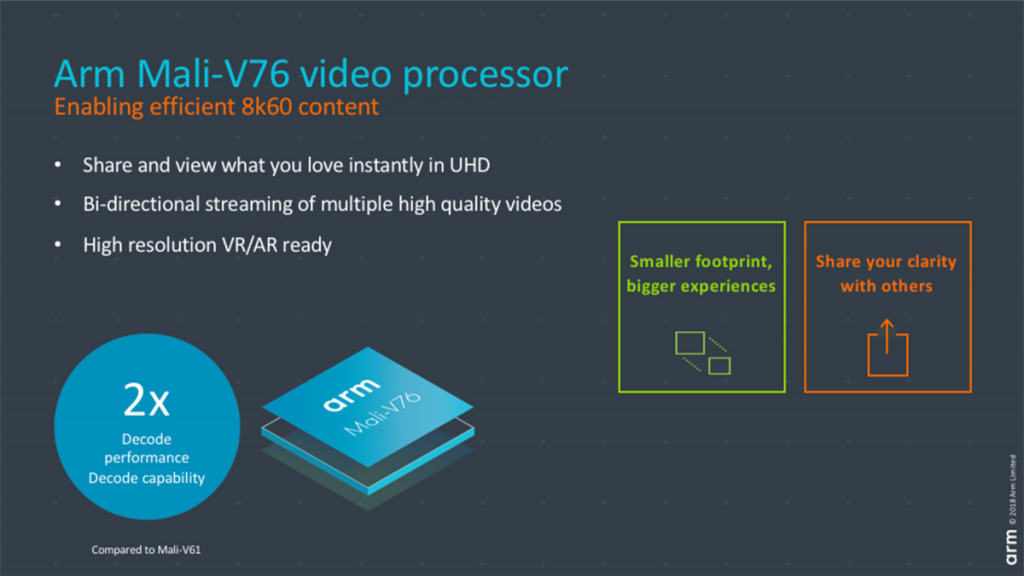Arm is an important player in the mobile industry. The company's Cortex CPUs are used by all vendors in the Android SoC space, while its Mali GPUs are used by Samsung, HiSilicon, and MediaTek.
For a few years now, Arm has had a tradition of announcing its new mobile products at TechDay. TechDay 2017 brought the Arm Cortex-A75 and the Mali-G72, while 2016's TechDay brought the Cortex-A73 and the Mali-G71. At TechDay 2018, the company has announced three products. The first is the Cortex-A76 CPU. Then we have the Mali-G76 GPU, which is followed by the Mali-V76 VPU (Video Processing Unit).
Let's take a look at these announcements one-by-one:
Arm Cortex-A76 CPU
The background
For the most part, Arm's Cortex CPUs have had a good record in performance and power efficiency. There have been mistakes made along the way such as the power-hungry Cortex-A57 in 2015, which regressed in terms of efficiency (doubly so when coupled with poor implementations of the core such as in the Snapdragon 810). Since then, however, Arm's results have spoken for itself.
The Cortex-A72 in 2016 was a great CPU that was overall faster and more efficient than its main competitors, the Samsung Exynos M1 used in the Exynos 8890 and the original custom Kryo core in the Snapdragon 820. It was not able to compete head-to-head with Apple's A series chips, but in the Android world, it was a huge step forward from the Cortex-A57.
The Cortex-A73 in 2017 brought low single-digit performance improvements, but proved to be significantly more power efficient than the Cortex-A72. In terms of efficiency, it beat Samsung's Exynos M2 CPU (used in the Exynos 8895), while managing to have equivalent performance. SoCs using the Cortex-A73 included the Qualcomm Snapdragon 835 and the HiSilicion Kirin 970. The two SoCs were acclaimed for providing much improved efficiency. The core has also made its way to mid-range SoCs, including the Snapdragon 660, Snapdragon 636, and the MediaTek Helio P60.
This year, Qualcomm uses the Cortex A75 in the form of its "semi-custom" Kryo 385 Gold cores. HiSilicon has yet to announce a new SoC for 2018, while Samsung kept following the custom core path with the highly ambitious, yet poorly implemented Exynos 9810. Reviews and testing have found the Cortex-A75-based Kryo 385 Gold in the Snapdragon 845 to have achieved a respectable 25-30 percent performance improvement over its predecessor. The A75 is also used in the newly announced Snapdragon 710.
This brings us to the Cortex-A76 -- the likely CPU of choice for late 2018 / 2019 SoCs.
According to Arm, the Cortex-A76 uses a new microarchitecture that enables 35 percent more performance. The company is promoting the Cortex-A76 as a CPU with "laptop-class performance." It's intended for mobile devices such as smartphones as well as Windows on ARM laptops.
The Cortex-A76 uses Arm's DynamIQ technology, which was announced last year alongside the Cortex-A75. According to the company, it delivers laptop-class performance while maintaining the power efficiency of a smartphone. In terms of numbers, Arm is promising a 35 percent performance improvement over the Cortex-A75, which is substantial as a year-over-year improvement. This comes alongside a figure of 40 percent improved efficiency over its predecessor.
Arm also mentions that performance will be up by 28 percent in Geekbench. This should mean that the A76 will be able to match the Exynos M3 in this regard, while having significantly better power efficiency. JavaScript performance is improved by 35 percent. The performance improvements have been achieved thanks to the fact that the A76 has 25 percent more integer IPC (Instructions Per Clock) than the Cortex-A75. It also has 90 percent more bandwidth. Floating point (FP) performance is increased by 35 percent.
The Cortex-A76 also delivers 4x compute performance improvements for AI/machine learning, according to Arm. The CPU is projected by Arm to ship in 3GHz configuration on TSMC 7nm products. Technical details about the new CPU can be read here. It's likely that the CPU will ship in commercial products by the end of 2018.
Arm Mali-G76 GPU
The Mali-G76 GPU is the successor to the Mali-G72, which itself was the successor to the Mali-G71.
The G71 was the first Mali GPU based on the new Bifrost architecture, succeeding the Midgard architecture. Mali GPUs are used by the likes of Samsung, HiSilicon, and MediaTek, while Qualcomm uses its own GPU architecture in its Adreno GPUs.
Up until now, Mali GPUs haven't been able to compete head-to-head in terms of sustained performance and power efficiency against their rivals. The Mali-G71 in particular showed poor power efficiency. The Mali-G72 did manage to achieve solid gains in both performance and power efficiency, but this is one area where Qualcomm continues to enjoy a significant lead over the competition in terms of performance-per-watt.
The Mali-G76 will improve Arm's competitive situation. The company is promising 30 percent more efficiency and 30 percent performance density. Maximum performance is higher by 25 percent. Machine learning (ML) improvements are quoted at 2.7x. More technical details about the new GPU can be read here.
Arm Mali-V76 VPU
The Mali-V76 succeeds the Mali-V61, which was released in 2016. A VPU (video processor) is an encoder/decoder, which means that it can encode and decode video. The Mali-V76 supports 8K decode up to 60FPS or four 4K streams at 60FPS. According to Arm, this gives consumers the opportunity to record video while video conferencing, or watch four games in 4K. At Full HD resolution, the video processor supports up to 16 streams of content, creating a 4x4 video wall.
The VPU has 2x decode performance, is 40% smaller than its predecessor, and has a 25 percent encode quality improvement.
Technical details about the Mali-V76 can be read here.

